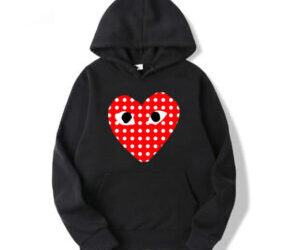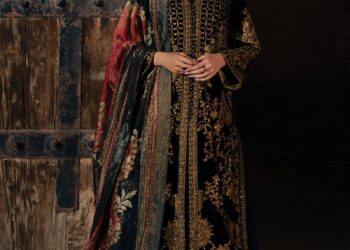The Kurti is the cornerstone of contemporary Indian and Indo-Western wear, offering unmatched versatility, comfort, and style. The secret to a perfect Kurti, however, lies not in the pattern, but in the unstitched kurti material you choose. The right fabric dictates the drape, the feel, and the final look from a breezy daily-wear top to a dazzling festive tunic.
Navigating the vast selection of unstitched kurti material online can be overwhelming. This guide simplifies the process, breaking down the best fabric choices based on occasion, weather, and the type of kurti design you envision.
1. Material Matters: Matching Fabric to Function
The first step in selecting your unstitched kurti material is determining its primary use. Shobhini’s collection offers a rich spectrum, ranging from daily comfort to bridal luxury.
A. Casual & Comfort: The Everyday Essentials
For kurtis meant for work, college, or daily errands, prioritize breathability, easy maintenance, and durability.
- Pure Cotton: The undisputed king of comfort. Cotton, especially lightweight varieties, is excellent for hot and humid climates. Look for fabrics featuring Hand Block Prints (like Leheriya or Paisley designs) or simple All Over Stripes. These prints add vibrancy while maintaining a relaxed, casual aesthetic.
- Pure Modal: A relatively newer favorite, Modal is a natural fiber known for its exceptional softness and high resistance to shrinkage. It drapes beautifully, making it perfect for straight-cut or A-line kurtis. Modal fabrics often feature subtle printed stripes or soft designs.
- Viscose and Rayon: These semi-synthetic fabrics mimic the feel of natural fibers but are generally wrinkle-resistant and offer a fluid drape, ideal for everyday tops that require a little more polish than basic cotton.
B. Festive & Formal: The Occasion Wear Fabrics
When crafting a kurti for a wedding function, party, or religious festival, you need materials that offer luxury, shine, and the capacity to hold intricate embellishments.
- Georgette and Chinon: These sheer, lightweight fabrics have a beautiful flow and are the foundation for most designer kurtis and Anarkalis. They are perfect canvases for heavy work, such as Thread & Sequin Embroidery, Zari work, or Faux Mirror detailing. Chinon often features vibrant Leheriya or Ombre Shaded patterns.
- Pure Silk (Mysore Silk, Gaji Silk): Silks offer an unparalleled sheen and luxurious feel. A Pure Mysore Silk with tone-on-tone Chikankari embroidery is an elegant choice for Haldi or Mehendi functions, while Pure Gaji Silk with heavy Zari Buti is ideal for reception or Sangeet wear.
- Organza: Known for its crisp texture, Organza is trending for structured kurtis, jackets, and yoke detailing. Look for Organza with rich prints like Bandhani or Shibori combined with gold foil embroidery for a spectacular festive piece.
2. The Power of Pattern: Print vs. Embroidery
The design on your unstitched kurti material defines its character. Shobhini’s selection combines traditional techniques with modern embellishments.
A. Embellished Fabrics (Heavy Work)
These materials require minimal added work and are perfect for centerpiece kurtis.
- Sequin & Mirror Work: Used extensively on Georgette, Net, and Viscose fabrics, sequin and mirror work fabrics are a bold choice for cocktail parties or evening functions. They catch the light beautifully, creating a celebratory look.
- Chikankari and Thread Embroidery: This is a classic choice for sophisticated attire. Tone-on-tone thread work on Pure Silk or Organza offers textural richness without excessive bling, making it versatile for both day and evening semi-formal events.
- Applique and Cutwork: For high-fashion, look for Net Fabric with intricate Flower Applique or bold cutwork, often used for jacket-style kurtis or sheer sleeves.
B. Printed Fabrics (Light Work)
Ideal for a vibrant, less-is-more approach.
- Hand Block Prints: These traditional Indian prints on Cotton or Modal add a charming, earthy feel. Patterns range from classic floral (Paisley) to modern geometric (Zig Zag) and are perfect for straight or Angrakha style kurtis.
- Shibori and Tie & Dye: These techniques result in beautiful, uneven, and unique color patterns (like the Rainbow Shibori on Georgette or Tie & Dye on Organza), giving your kurti a distinctive, artistic look.
- Ombre Shading: Fabrics featuring a color gradient (like light blue to navy blue Chinon) create an elongated, slimming effect and are a modern choice for long kurtis.
3. Custom Stitching Success: Tips for Buying Online
Buying unstitched kurti material gives you complete creative freedom, but it also requires smart shopping online.
A. Measuring for Your Kurti
The required yardage depends on the kurti style:
- Standard Straight-Cut (Sleeved): Typically requires 2.5 meters of 44-inch wide fabric.
- Anarkali/Flared Kurti: Requires 3 to 5 meters, depending on the desired fullness of the flare.
- High-Low or Asymmetrical: The requirement varies; always add 0.5 meters extra for adjustments.
- Expert Tip: If a fabric is sheer (like Organza, Net, or lightweight Georgette), remember to purchase an equal amount of lining material (usually cotton shantung or soft crepe) to ensure comfort and opacity.
B. The Importance of Width
Most fabrics are 44 inches wide. However, some materials (often Lycra or specific embroidered nets) come in “Big Width.” This is crucial for maxi-length Anarkalis or kurtis with very wide sleeves, as it minimizes joins and seams.
By selecting your unstitched kurti material with a clear understanding of its texture, drape, and the work it features, you can move past the limitations of ready-made sizes and create a bespoke garment that perfectly reflects your style for any occasion.
Trending FAQ: Your Queries About Unstitched Kurti Material
Q1: Which is better for a summer kurti: Cotton or Viscose?
A: Cotton is generally better for intense heat and humidity due to its superior breathability. Viscose is excellent for summer evenings or workwear where you need a slightly more wrinkle-free and flowing drape.
Q2: What is the best fabric for a full-flared Anarkali?
A: Fabrics that have an excellent drape, such as Georgette, Chinon, or Pure Modal, are best for a full-flared Anarkali. Avoid stiff fabrics like heavy silks, as they may add unnecessary bulk.
Q3: How do I choose lining for sheer kurti material like Georgette?
A: For everyday wear, use soft cotton or shantung. For a party-wear kurti, use Crepe or a matching Dull Satin lining to give the garment a richer feel and prevent transparency.
Q4: Should I wash the unstitched kurti material before giving it to the tailor?
A: Yes, especially natural fibers like Cotton and Pure Modal. Always pre-wash them (or soak them) to account for any natural shrinkage before cutting and stitching. Silks and heavily embellished fabrics should be dry-cleaned or handled very gently.





